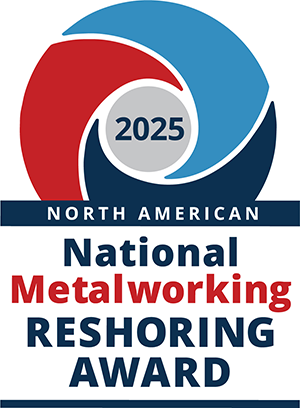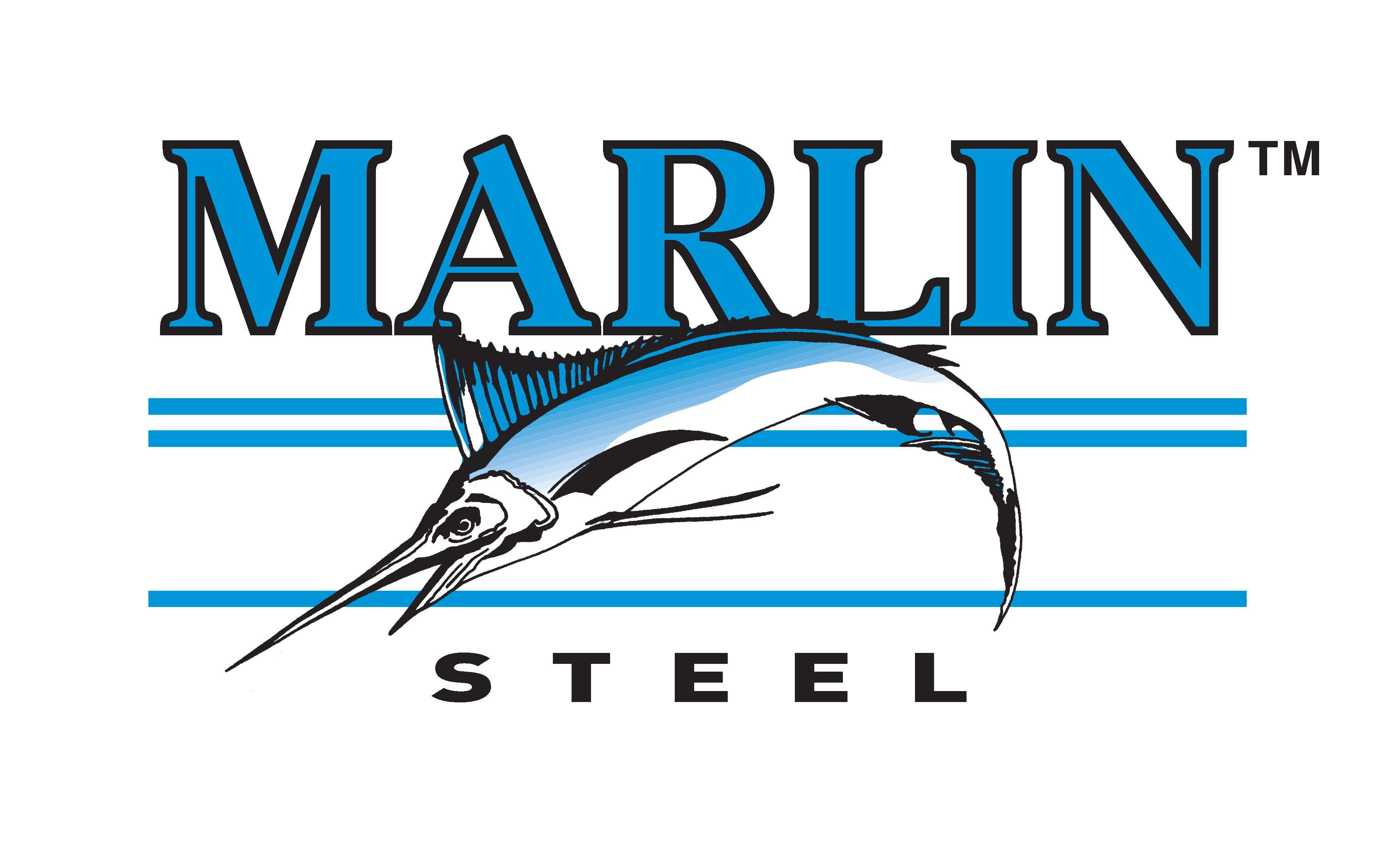![]() Below is a partial transcript from "The Future of Manufacturing" segment on "Midday with Dan Rodricks" on WYPR 88.1 FM Baltimore. It aired Wednesday, Feb. 6, 2013.
Below is a partial transcript from "The Future of Manufacturing" segment on "Midday with Dan Rodricks" on WYPR 88.1 FM Baltimore. It aired Wednesday, Feb. 6, 2013.
"Baltimore steel workers continue to reel from news that the last mills at Sparrows Point will be sold for parts and razed. More than 2,000 workers lost their jobs; many still can’t find work. So what does the future hold for these workers and others in U.S. manufacturing? Is there a quiet comeback underway, as some experts suggest, or is the era of mass employment through American manufacturing truly over? Guests include Drew Greenblatt, owner of Maryland-based Marlin Steel Wire Products and a board member of the National Association of Manufacturers, the industry's lobby in Washington; Dan Gunderson, Baltimore County's economic development director and chairman of the Sparrow's Point Partnership; journalist Charles Fishman, author of The Atlantic’s recent cover story, “The Insourcing Boom"; and Alan Tonelson, research fellow at the U.S. Business and Industry Council.
Excerpts:
Dan Rodricks: I want to go next to Drew Greenblatt on this. Does it surprise you that GE is doing this? What about this impresses you?
Drew Greenblatt: I think Charles is spot on in discerning this trend. We are recipients of this also. We are growing. We’ve grown seven years in a row. We just received a large order that used to be made in China for over a decade. We’re making 160,000 sheet metal components. We’re shipping it to Chicago. We make this in Baltimore City. We’re using steel that’s made in Indiana. We’re using a robot that’s made in Connecticut and we’re shipping to Chicago. Now this Chicago client used to buy this for over a decade from China and all the things that Charles mentioned are having an impact and it’s wonderful for American factories. Specifically, the quality of USA products are wonderful, they are top-notch. Chinese wages are rising, they are expanding very rapidly, and they are literally having riots and challenges with their unions pushing hard against the existing companies. In addition, things like freight are much higher than they used to be to America. Intellectual property rights are embraced in America and they are tarnished and discarded over in China. The rule of law is appreciated here. Energy prices are much cheaper in the USA. We pay $3 for natural gas, and they’re paying $20 for natural gas. So all these things are having a very positive effect, and it’s good for American manufacturing.
DR: Just to clarify, to make it clear. You weren’t in China and returned to Baltimore? Your company has been in the United States all along
DG: 100 percent USA made 100 percent Baltimore city made. However, we do export to 36 countries. We export to China; China is a market we like to sell to
DR: Tell people about the products you make
DG: We make material handling baskets for factories, aerospace factories, automotive baskets.
DR: Wire baskets?
DG: Wire baskets
DR: You started off with bagel baskets, right?
DG: Right, we were devastated by China. What happened is China started importing bagel baskets cheaper than the steel I could buy. So we had an untenable market proposition. We were hemorrhaging cash. I really had a choice: We were either going to throw in the towel and let go of all the workers or we were going to transform. We morphed; we transformed making quality engineered parts very quickly. That’s our nitch. Now we sell to Toyota. And what Charles was talking about before, dovetails exactly to our experience. There are 11 Toyota factories in America. We sell to West Virginia. We sell to Texas. We sell to Georgetown, Kentucky. We sell to Indiana. These 11 factories are creating American jobs, and we’re selling into these factories. It makes sense for Toyota to build a plant here in America, not in Japan. So this is good for us.
(24:27)
DR: Drew Greenblatt, I’ll go to you and then Charles back to you. Is this just wishful thinking? A lot of people have said over the years with all that outsourcing that went on, all the closing of plants in the US, companies moving overseas, moving operations to Central America, to Asia. That the genie was out of the bottle, that those jobs were never coming back to quote Bruce Springsteen in his song “Your Hometown.” Is this wishful thinking? Are we just seeing some anecdotal evidence that maybe in some cases, some companies prefer to make a profit here?
DG: I think what happened was, the pendulum swung too far. And people are realizing “Oops, we shouldn’t have pushed all that stuff over to Asia and we should have a blend. We should have some stuff in America and some factories over in China.” I think that’s the general consensus. Look, we were all freaking out as a nation about Japan in the ‘80s that they were going to take over the world. And then in the ‘90s, it was about Mexico. These people were wrong. What transpired was, we continued to soldier on and figure it out. We are a very innovative nation. We have a lot of things in our favor, including the rule of law, intellectual property rights, etc. that make this a very conducive environment to grow and build and invest. And for those reasons, America is not down and out. We’re going to surge forward. We’ve taken some licks. I’m not saying it’s perfect, but we’re on the ascent and this a very good time that we’re about to head into.
(31:26)
DR: And in the case of Marlin Steel, I’ll go back to Drew Greenblatt here, in your story, in the model of your business, you carved out a niche? You found a niche, a place for competition that the Chinese haven't covered basically, right?
DG: Correct, we’re using innovation. 20% of our employees are degreed mechanical engineers from the UMD. They are coming up with really slick elegant designs that make it very worthwhile to use us rather than commodity products coming out of China that are going to take 8 weeks. Another big factor here to really grow American manufacturing is the cost differential. Right now, the average American factory has a 20-percent negative price differential against our competition and that’s primarily for three reasons. #1 regulation, #2 torts, #3 taxations. Now on the flip side, we have cheaper energy, but the blended rate it costs 20 percent more to make something in America. If we could lower that down, we’ll win more jobs. If we could lower that down, we’ll hire more locals. And that’s critical for our country, and we have to make sure we address these structural issues and that will have a huge impact on us thriving and hiring more people in manufacturing.
(36:52)
DR: What do you think it looks like 25 or 30 years from now, robotics? Smaller operations? What would you say about it, Drew?
DG: You’re spot on. We’ve invested $3.5 million in robots, so our employees are paid four times more than the day I bought the company. Because of that, they’re doing more brain work and less rote carpal-tunnel syndrome type of work. It’s a more interesting job. It’s also a safer job. We’ve gone 1,500 days without a safety incident. Why? Because the robots are doing the nasty work, the boring work, the work at 3 o’clock in the morning. So for that reason, our employees are safer. They’re doing more interesting things. They’re more engaged. They’re more productive and because of that, we can pay them more. That’s the trend. It’s going to be companies heavily automated and employees well paid running many machines.
Dan Gunderson: I’m glad Drew mentioned that, because now we’re talking about the manufacturing of today versus what I think many people have in their minds as manufacturing of yesterday. In fact, the very word “manufacturing” is outdated. It’s Latin for manus by hand and factur putting together by hand. And in fact, what Drew said, is it’s automation today, so yes we lost the employment but we’ve gained significantly in productivity and innovation and that’s Americas future. We can never give up on manufacturing. In fact, 2/3 of all the scientists and degreed engineers in America are employed with manufacturers and 90 percent off all the patents that are issued in America come from our manufacturing community. This is a highly sophisticated world and it’s going to require some skill sets that are going to cause us to revamp our entire education system and our training delivery system.
DG (Drew Greenblatt): The average wage is $77,000/ year and virtually all manufacturers offer benefits. We offer Blue Cross Blue Shield for all our employees; we pay 100 percent of their tuition, etc. These are the kinds of benefits, rich benefits, well-paid employees that our country desperately needs.
(41:50)
Charles Fishman: Another thing they have learned, and I’d be interested in Drew’s take on this, is you have to be careful how you use automation. The brand new assembly lines that they have put into place use automation in a very limited, targeted way, because they want those assembly lines to be able to change. They want to change colors, they want to change features on the appliances, and it turns about that people do that much more quickly than the machines. The GE manufacturing people said to me you have to be careful about buying robots. They’re incredibly expensive and then you end up running the factory for the robots rather than the robots helping you run the factory. You’ve got this investment, so you shape your manufacturing to take advantage of that investment. And what they have figured out is that people are much more nimble, much smarter and much more adaptable at least than manufacturing robots are now, and that’s another little hopeful element that people who are doing this everyday appreciate how quickly you can change an assembly line if you aren’t bolted to the ground with robots
DG: Absolutely, you need very agile, very nimble manufacturing. The runs are short. It’s not like the old days when you would run millions and millions of parts, now it’s very short runs. You’ve very quick and responsive to your clients. You don’t have the ability to make the big auto assembly lines where you make the Model T millions a year, only in black. That’s not how it’s done anymore.
DR: You know, intuitively someone would say, robot -- that replaces people, Drew, you could’ve hired 10 more people for every robot you’ve invested?
DG: No, it’s the opposite. Every time we hire a robot, we win more jobs, and because of that we have to hire more people to run the robots at night and we need more degreed engineers to feed more jobs into the robots. It’s counterintuitive. It’s like a carpenter. Which carpenter is more efficient, effective, who’s going to get more jobs? The one with the hammer? Or the one with the nail gun? You want your carpenter to have the nail gun so he is very efficient, very productive. You want American factories to be highly automated and very robotic so they can’t beat them in China.
(47:25)
DG: We desperately need Baltimore City, Baltimore County, to generate graduates that know how to read a blueprint, so they know what a tangent is, they know what a diameter is, they know what a radii is, so then they can confirm the quality of the parts are correct and they can do measurements off of the baskets and the wire forms we make. We desperately need our school systems to generate these kinds of talented pupils so we can hire them. They are going to be running the robots we talked about earlier today. It’s like our employees will be on steroids with these robots and they’ll be able to prevail and win, but we need our schools to have that level of top notch quality.


.gif)


